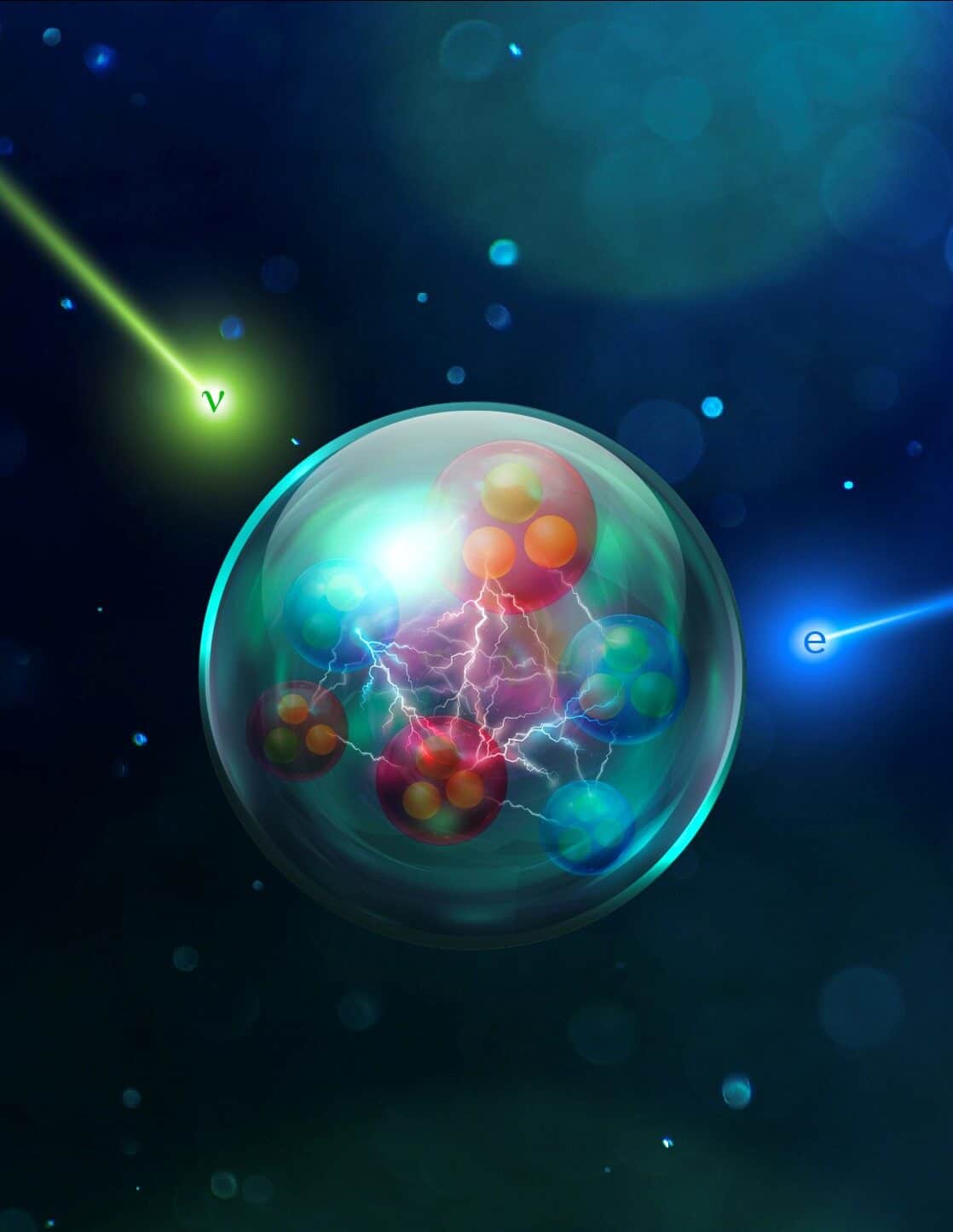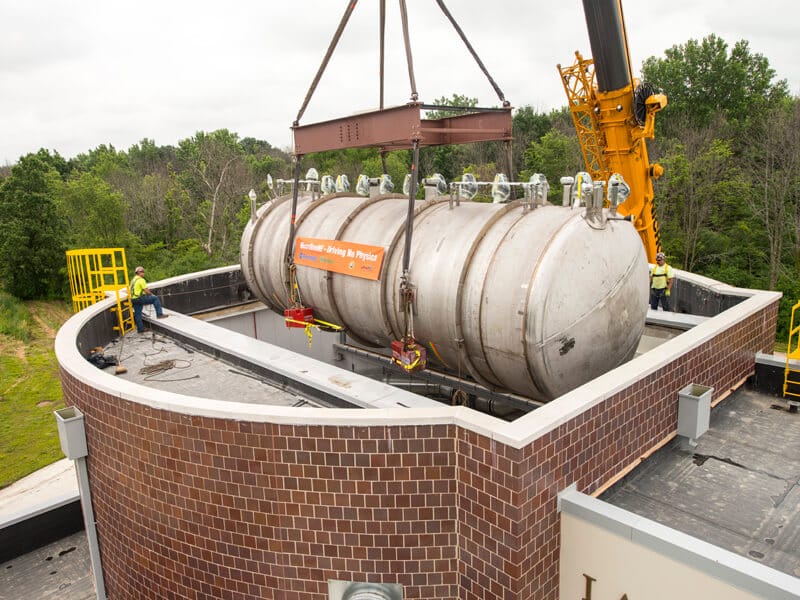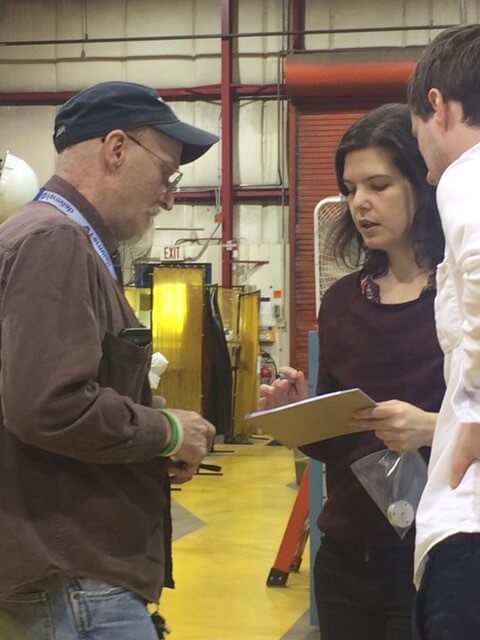The experiment, with the participation of nearly 200 physicists from different countries, was conducted at the Fermilab National Laboratory in the United States. The team of experts from Israel included two research groups, Dr. Adi Ashkenazi and Prof. Eli Pisetzky from the School of Physics and Astronomy at Tel Aviv University

A team of Tel Aviv University researchers recently participated in the first international experiment of its kind, MicroBooNE, which sought to challenge the theory of particle physics and examine in depth the mysteries of the neutrino particle. The experiment, with the participation of nearly 200 physicists from different countries, was conducted at the Fermilab National Laboratory in the United States. The team of experts from Israel included two research groups, Dr. Adi Ashkenazi and Prof. Eli Pisetzki from the School of Physics and Astronomy at Tel Aviv University.
Neutrinos are one of the most common particles in our universe. It is created in every radioactive decay, so many neutrinos are created in every star, including our sun, in nuclear reactors, and of course in particle accelerators. Even we humans produce neutrinos. Only the weak force acts on the neutrino particles, and they do not respond to the electromagnetic force or the strong force. Therefore, despite their high frequency, it is very difficult to discover neutrino particles. Most of them just pass through any detector without leaving a trace.
Today, three types of neutrinos are known - electronic, meonic and teutonic. Many of the properties of these particles are still unknown, and those that are known do not agree with the accepted theories. In the last decade it was thought that the existence of a fourth neutrino particle could explain anomalous observations in previous neutrino experiments. It almost goes without saying that the discovery of such a particle would be a huge discovery and change much of what we know about the universe.

Dr. Ashkenazi explains: "The MicroBooNE experiment was built specifically to examine the observed anomalies. MicroBooNE is an innovative neutrino detector, which came into use in 2015. The central part of the detector is a huge tank filled with 170 tons of liquid argon, and it is capable of recording with high precision XNUMXD images of charged particle trajectories that pass through it. The trajectory of a neutrino particle will not be detected by the detector, but other charged particles that are created in the collision between the neutrino and the atomic nucleus of the atom will be detected and from them it will be possible to conclude about the existence of the neutrino."
Tel Aviv University took a significant part in running the experiment, evaluating the background, and any errors that could have affected its results. The group from Tel Aviv University specializes in precise measurement of the interaction between the neutrino particle and the atomic nucleus of the argon that the detector is made of.
In recent weeks, MicroBooNE finished analyzing the information they collected over three years and published four different analyses. All the data confirmed what is known from the standard model of particle physics, and no evidence was found for the existence of a fourth neutrino. These results affect our understanding, and encourage new theories.
MicroBooNE is the first experiment that used this technology in the United States, but not the last. These days the DUNE experiment is being planned and built, much larger, if only it had the sensitivity to measure some of the unknown properties of the neutrino. These may even be able to help us answer various questions, among them understanding the reason why our universe has much more matter than antimatter.

Dr. Adi Ashkenazi: "This is an important result that helps clarify the uncertainty surrounding neutrino particles, but our eyes are already on the next experiments, primarily DUNE. We at Tel Aviv University are already developing a wide variety of methods in order to examine the interactions between neutrinos and atomic nuclei, and in this way we can measure the properties of neutrinos more precisely.'
These days, the results of an innovative study by the group from Tel Aviv University on this topic are also being published in the magazine NATURE. The research, done in collaboration with groups from MIT, ODU and Fermilab, uses precise measurements of collisions of more familiar particles, the electrons, with atomic nuclei to advance our understanding of neutrino interactions.
Dr. Ashkenazi adds: "The research shows that there is still a lot of room for improvement when it comes to our understanding of the interactions on which we base ourselves when discovering the properties of neutrinos. We are working to improve our models, analyzing more results from MicroBooNE, and these days collecting more data of electron collisions at the Jefferson Laboratory in Virginia. The members of the group from Tel Aviv University, postdoctoral student Joshua Barrow and student Amir Gruber, are working on a parallel analysis that uses cosmic muons instead of electrons inside MicroBooNE. We want to make sure that by the time DUNE is up and running, we will have all the tools to analyze its results, and advance our understanding of the particles that exist in this amazing universe of ours.''
